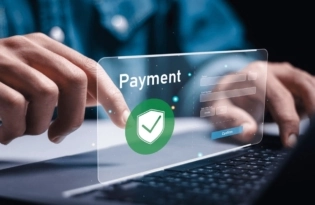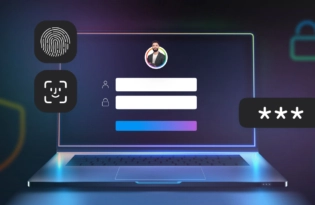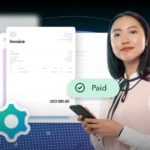4 reasons your business struggles to get paid on time (and how to fix it)
Editor’s Note: This is a guest post by Nathan Resnick, CEO of Sourcify. Cash flow is vital for the success and stability of any small business. While ACH transfers and alternative banking solutions are readily available to streamline transactions between small businesses and their clients, many companies struggle to get paid in a timely manner. While…

Editor’s Note: This is a guest post by Nathan Resnick, CEO of Sourcify.
Cash flow is vital for the success and stability of any small business. While ACH transfers and alternative banking solutions are readily available to streamline transactions between small businesses and their clients, many companies struggle to get paid in a timely manner.
While a single late invoice may not seem like a big deal, chronic struggles to get paid on time can make it harder for a company to cover its operating expenses and could even bring about the end of the business.
In fact, in a recent survey conducted by vcita of over 3,000 micro and small business owners, 23.4% cited managing cash flow and payments collection as the biggest challenge they encountered during the pandemic — only a fraction of a percentage point behind the top answer of finding new clients.
Especially in times of uncertainty, addressing common issues that keep you from getting paid on time can give you much-needed peace of mind and ensure you have the resources you need.
1. Your invoices don’t have firm deadlines
Quite often, small businesses will send out invoices with the notice “payment due upon receipt.” While in theory, this would seem like it would motivate clients to submit payments immediately, this often isn’t the case.
Consider the bills your business pays each month, such as credit cards and utilities. Each bill has a set due date. Even if that date is several weeks away, setting a deadline creates a sense of urgency that motivates you to submit the payment as quickly as possible.
Simply by adding a due date to your invoices, you can help reduce the likelihood that your clients will move your payment behind other bills they need to pay
2. There are no consequences for late payments
While adding a due date is often enough to get clients to start paying in a timely manner, some will continue to make late payments. If there aren’t any consequences for these payments, the due dates on your invoices will continue to be ignored.
When this happens, you should update the terms of your contracts so that there are clear consequences associated with late payments. For especially problematic clients, you may even consider charging additional fees for late payments. Make it clear that if payments are not received after a set number of communications from your team, you will send the bill to collections.
By clearly spelling out what happens when a client fails to make payments in accordance with your contract, you greatly reduce the likelihood of them delaying payments.
3. You don’t have a solid tracking system in place
What your business does after it sends out an invoice is just as important as the creation of the invoice itself. If you don’t have a method that keeps you organized, it can be surprisingly easy for unfilled invoices to slip through the cracks. And if you forget to send follow-up messages regarding a delayed invoice, your client has a legitimate excuse as to why they forgot to pay.
To avoid this, your office must develop a system that keeps accounts payable organized. The status of each invoice needs to be carefully tracked until it is filled. An automatically updated dashboard will give your financial team the information they need to send follow-up messages or take other actions as needed.
Many payment dashboards further streamline this process by allowing you to set up notifications or alerts for issues like a past-due invoice. Some can also automate payment reminder messages. By automating as much of the tracking system as possible, you will lighten your team’s burdens and reduce the risk of manual error.
4. You don’t offer convenient payment methods
Today’s customers have more ways to pay than ever before. Regardless of whether your business caters to other companies or everyday consumers, you should strive to cater to their diverse payment preferences. From ACH transfers and PayPal to credit cards and cryptocurrency, offering more payment methods will make it easier for your clients to do business with you.
Some clients may experience adverse circumstances of their own that hinder their ability to pay the invoice in full by the due date. Rather than not getting any money at all, your business may benefit from working with such clients to set up alternate payment plans. This could include splitting a single invoice into weekly or monthly installment payments.
Proactive communication with your clients will help you come to a solution that creates a win-win for both of you, so that everyone is better able to manage their cash flow appropriately. A rigid payment system with limited options could keep some potential clients from choosing to work with you in the first place. Greater flexibility can ultimately yield higher profits.
Get paid faster and improve your cash flow
Poor cash flow has been cited as the number one reason why small businesses fail, contributing to as many as 82% of startup failures. While getting your clients to pay you in a timely manner isn’t the solution for every cash flow concern, it will go a long way in ensuring that your business accounts stay in the black. By using these tips to improve your invoicing and payment processing, you will be better positioned to enjoy the financial stability you need.
How Payoneer can help you get paid on time:
- With Payoneer, you can offer your clients several efficient and secure ways to pay online – through credit card, local bank transfer or via their own Payoneer account.
- Either invoice your clients in advance or after you complete a job directly from your Payoneer account.
- If they need a little nudge, you can also send reminders and then track the payment until it arrives to your account.
- Once paid, you can use your funds in multiple ways – withdraw to your local bank, pay your suppliers or contractors directly from your Payoneer account, withdraw from ATMs worldwide, or spend online or in stores.
There’s no need to suffer from late payments anymore. Open a Payoneer account today and see how easy it is to manage your business payments!
Nathan Resnick is the CEO of Sourcify, the fastest growing sourcing platform that helps businesses manufacture products across Asia.
1] According to eligibility and current Payoneer offering
Related resources
Latest articles
-
How to simplify payment operations with Payoneer’s automation feature
Save time, reduce costs, and eliminate errors with Payoneer’s new payment automation feature.
-
How to prevent online payment fraud as an SMB
Prevent online payment fraud by overcoming challenges like phishing, fake accounts, and account takeovers (ATO) with enhanced security features from Payoneer.
-
Amazon Fees & Policy Updates 2024
Amazon regularly makes planned updates to fees and policies that may impact Payoneer customers that sell on Amazon. To keep Payoneer customers informed regarding upcoming and past updates, we’re providing a list of known changes to Amazon fees and Policy updates.
-
How Payoneer’s target exchange rate feature will help you save more on bank withdrawals
Boost savings with Payoneer’s target exchange rate feature.
-
Navigating phishing attacks: A guide to keeping your Payoneer account secure
Keeping your funds safe is our number one priority at Payoneer. While phishing attempts can happen, arming yourself with knowledge is key to keeping your data and money safe
-
Zoho Books and Payoneer integration guide
Learn how to seamlessly integrate Payoneer with Zoho Books. Follow our step-by-step guide to connect your accounts, create invoices, and manage payments efficiently. Optimize your financial operations today!














